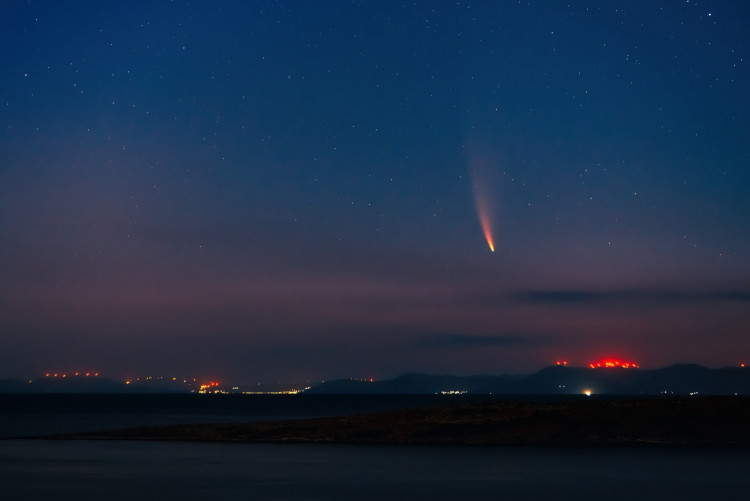A tiny asteroid reached Earth's atmosphere on Mar. 11 at 9:20 p.m. UTC.
This is a fairly common occurrence. Earth's atmosphere is constantly bombarded by space rocks. What's remarkable about this asteroid is that it was discovered by an astronomer before it collided with the atmosphere. It's known as 2022 EB5, and it's only the fifth asteroid we've ever seen before it collides with the Earth.
At the Piszkésteto Mountain Station, part of the Konkoly Observatory near Budapest, Hungary, astronomer Krisztián Sárneczky was observing the night sky. The Minor Planet Center picked up on 2022 EB5 during his observations. The space rock measured roughly 10 feet (3 meters) wide, according to scientists.
The object was spotted by Sárneczky at 7:24 pm UTC. At an entrance speed of roughly 18 kilometers per second (11 mps), it reached Earth's atmosphere two hours later over the Arctic Ocean, just southwest of Norway's Jan Mayen island.
Soon after, infrasound equipment in Greenland and Norway detected an explosion, which was most likely caused by the item fracturing in the sky before plunging into the sea. The blast produced an output of around 2,000 tons of TNT, according to those detections.
Most of these objects will explode as they fall into the Earth's atmosphere, transforming into what is known as a bolide. Scientists believe this happens when air enters the meteor's body through microscopic fractures, causing pressure to build up as it passes through the atmosphere at great speed.
Asteroid fragments may fall to Earth, but whatever remains of 2022 EB5 after it burns is likely to end up in the ocean. This is also normal: because water covers the majority of the Earth's surface, it stands to reason that most space pebbles will end up there as well.
The discovery of 2022 EB5, however, is incredible for another reason.
The growing number of asteroids found before impact, as well as their shrinking size, bodes well for our hazardous asteroid detection skills. Although the 2022 EB5 was never large enough to be considered harmful, the fact that we can discover small, non-hazardous objects implies that our detection capabilities are improving.
As the blazing bolide sped through the sky, people in Norway and northern Iceland may have witnessed a brief flashlight up their skies for a few seconds. You can submit your sighting to the International Meteor Organization here if you were one among them.






